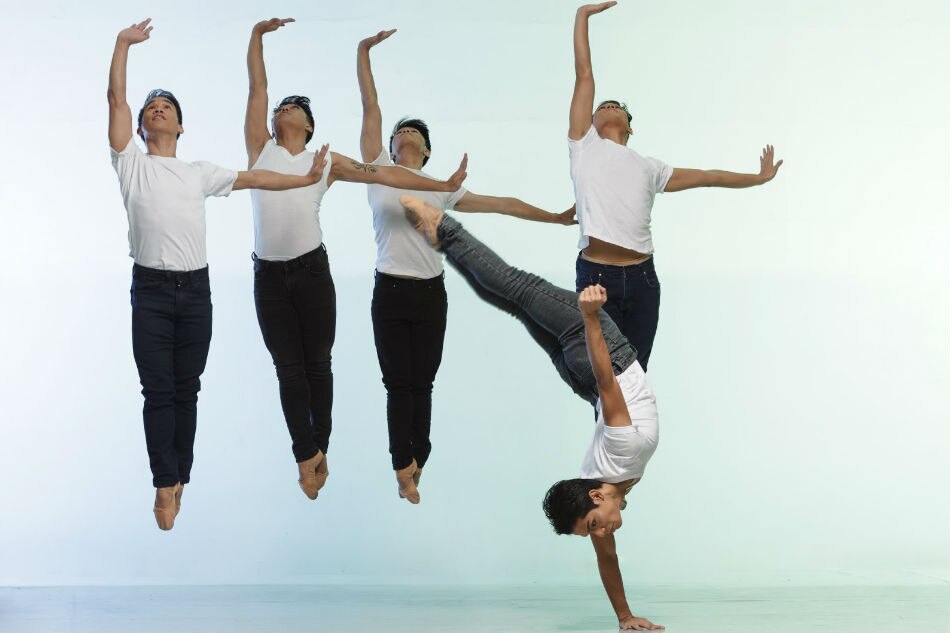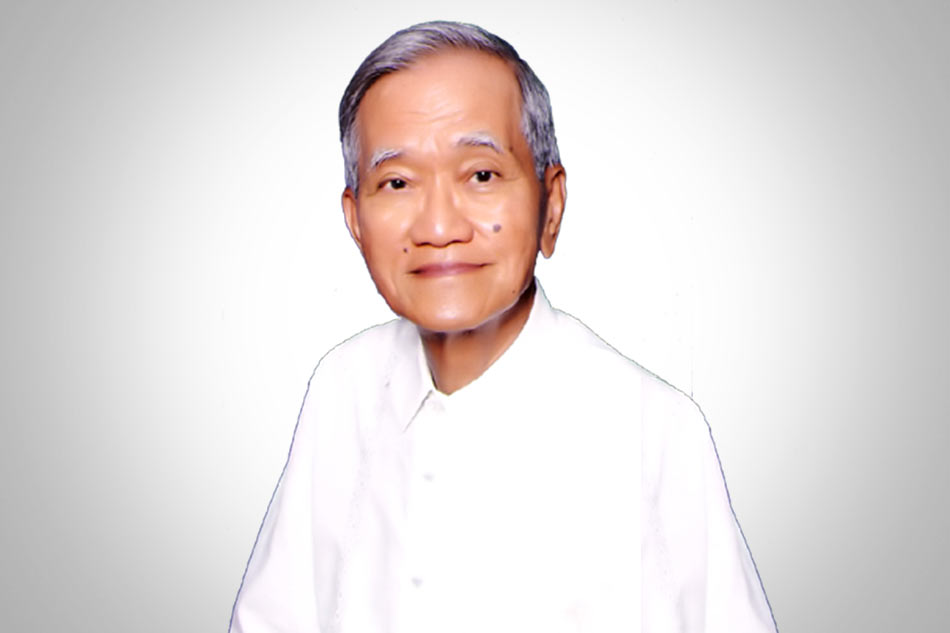 |
| photo from Ballet Philippines archives* |
When the curtain rises in a ballet production and there is no set, it can only mean one thing - the medium is the dance!
Such was the case in Carmina Burana, Ballet Philippines' opening salvo for the 49th Season. I attended the performance on a Saturday evening not expecting anything. Having trained and performed as a dancer with the company for many years, I know in my heart that all of the company's productions would be nothing short of spectacular. Was I surprised that they outdid themselves this time? Certainly!
 |
| Ronelson Yadao's Sama Sama; photo from Ballet Philippines archives |
The show opened with Ronelson Yadao's choreography; Sama Sama, highlighting the company's male ensemble. It was a light-hearted piece showcasing how far the company's male dance technique has progressed this far. Very simple costumes in white tees and black jeans, undermine the fluidity and strength the men of Ballet Philippines has achieved. These guys are all young and at the height of their virility and they make the steps look so easy. That's the choreographer's trick! You really can't tell if the dancers are just hamming it up or just winging it... And boy, were they enjoying it. I can't help but notice how some of the dancers have improved. Danilo Dayo and John Ababon have earned their solo parts, I'd say. Even the male apprentices have managed to keep up with the principals in a fun, energetic number. Can't help but notice how Yadao also managed to incorporate some folk dance steps into the movement. The Coconut Nut segment was a noticeable ode to a "Maglalatik" deconstruct. This piece was a great curtain-raiser, I wouldn't be surprised if they included it as part of a repertoire for a tour.
 |
| Brando Miranda's Vivaldi Concerto; photo from Ballet Philippines archives* |
Brando Miranda's Vivaldi Concerto, on the other hand, showcased the company's mettle in neo-classicism. Three couples performed in ensemble work and pas de deux. Katrene San Miguel, Monica Gana and Sarah Alejandro and respective partners Erl Sorilla, Lester Requindin and John Ababon flitted in and out of the stage with ease exhibiting nearly flawless partnering. The women sparkled in this piece enabled by the danseurs' steady support. Katrene was her usual "coquettey" self. Monica was a picture of innocence and naivete. And Sarah was the strong woman of the world. Each of the ladies performed with great aplomb never faltering with their pirouettes en pointe. It helped, of course, that their partners never let them down. Some of the lifts were very risky but there were no second thoughts in their execution. The pressages and some overhead lifts made my heart skip a little bit but they were saved at the last minute which would have been unnoticeable to the trained eye. The piece ends as it began, all six dancers dancing together to guitar soloist' Aaron Biag's melodious strains. Brando's choreography remains as light and entertaining as ever.
 |
| Ronelson Yadao in Season of Flight; photo from Ballet Philippines archives* |
Season of Flight by Norman Walker was first performed in June 1972. An abstract piece taking its inspiration from the movements of birds, this piece has been performed by the company to critical acclaim in its world tours. For this performance, the leads were ably performed by Ronelson Yadao, Eugene Obille and Jemima Reyes. It's refreshing to see Jemima dancing barefoot for a change. For once, she's not en pointe! We know she can be fearless when she's literally on her toes but dancing opposite Ronelson who is an accomplished modern dancer, she manages to stand her ground. Great casting for this one, really. The two have a chemistry that isn't hard to miss. Eugene Obille as the third wheel is a looming presence with his huge frame. This is the piece that prepares the viewer for the piece d' resistance of the evening. The younger company members form the corps d' ballet have been given the task of dancing in a Norman Walker choreography and they imbue the piece with a youthful quality that was less... heavy...
 |
| Carmina Burana by Alice Reyes, photo from Ballet Philippines archives* |
After the interval came Alice Reyes' Carmina Burana. Now, I'm not afraid to say how fortunate these young dancers are. Many years ago, as a young dancer being launched with the very first junior company called Ballet Philippines II, the other dance scholars and apprentices had to learn the Taberna section of Carmina Burana. We never got to perform it, though. Last minute changes had to be made and eventually the seniors did the piece for us. Decades later, Carmina Burana is resurrected for the 49th Season to the delight of newer dancers and newer audiences alike.
 |
| Carmina Burana; photo from Ballet Philippines archives* |
Carl Orff's oratorio is a strong piece on its own. It has stood as an independent piece of music for centuries. Used as background music to highlight cinematic scenes, audiences are more familiar hearing Carmina Burana in epic battle scenes for big budgeted movies. The company's principals and soloists were used to full effect on this choreography. Denise Parungao, Jemima Reyes, Sarah Alejandro, Ronelson Yadao, Victor Maguad, Lester Requindin along with the corps delivered the goods. Writhing, nubile bodies either sporadically exploding in movement in scattered sections or moving in unison as one collective mass of human flesh, Alice Reyes mastery in choreography comes to the fore. She's able to relate a story using dance as a narrative... if only for this, then she deserves her title as National Artist!
Kudos also goes to the musicians that went along on this journey with the company. It was a tough repertoire to play and sing. The ABS-CBN Orchestra, Philippine Madrigal Singers, Our Lady of Fatima University Chorale, Kilyawan Boys Choir, guitarist Aaron Biag, baritone Noel Azcona and coloratura soprano Ma. Cristina Viguila- Navarro all had a share in making it a memorable evening. It was obvious that conductor Gerard Salonga has moved away from the shadow of his famous sister. He manages to steer his musicians to create moods for his audience with his artful musical direction. Lyrical pastoral scenes, almost comical pop tunes, reverberating choral crescendos all blended together with passionate dancing to climax into one brilliant performance. The only move-able set piece for Carmina Burana was a reconstruction from National Artist Salvador Bernal's original design. Apparently, this set has remained as timeless as the dance piece. Everything comes together with exceptional lighting design from Katsch Catoy, no less. The dancers' bronze skin is highlighted by soft amber while the set glows in fiery red in some sections. I just love it when all the elements come together in a cohesive performance.
Hold on to your season tickets, folks! Ballet Philippines' 49th Season has only just begun...
*Official photographers for Ballet Philippines are Jojo Mamangun and Justin Alonte
*Official photographers for Ballet Philippines are Jojo Mamangun and Justin Alonte











